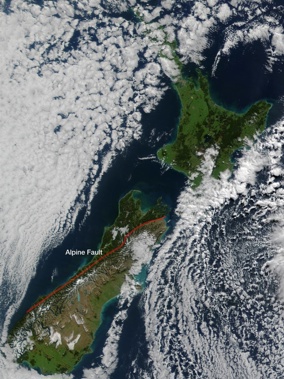
Freshly-installed seismometers – one of them now operating at an underground depth roughly equivalent to the height of Auckland's Sky Tower – are giving scientists unprecedented insights into our largest on-land fault.
Stretching 600km up the western side of the South Island between Milford Sound and Marlborough, the Alpine Fault poses one of New Zealand's biggest natural hazards.
Recent research has suggested the next big quake along the fault could block South Island highways in more than 120 places, leave 10,000 people cut off, and cost the economy about $10b.
It has a clear geologic record of rupturing around every three centuries - and 2017 marked the 300th anniversary of what is thought to have been a magnitude 8 quake that moved one side of the fault by about 8m in a matter of seconds.
The latest estimates put the chances of a major rupture within the next 50 years at 75 per cent – and the probability of that quake measuring over 8.0 at 82 per cent.
"It's very late in its typical cycle – so it's reasonable to expect that in coming years or decades, there'll be another Alpine Fault earthquake," Victoria University geophysicist Professor John Townend said.
"So, what's really important to understand is what the temperatures and stresses acting within the fault are, ahead of an earthquake."
A first-of-its-kind seismometer, installed by GNS Science staff deep in a borehole near Whataroa late last year, was now offering a high-resolution view of deep fault movements within the fault, while helping scientists better locate quakes around the area.
GNS Science remote Infrastructure management specialist Tim McDougall said a few special additions were needed to lock the instrument in place at 300m.
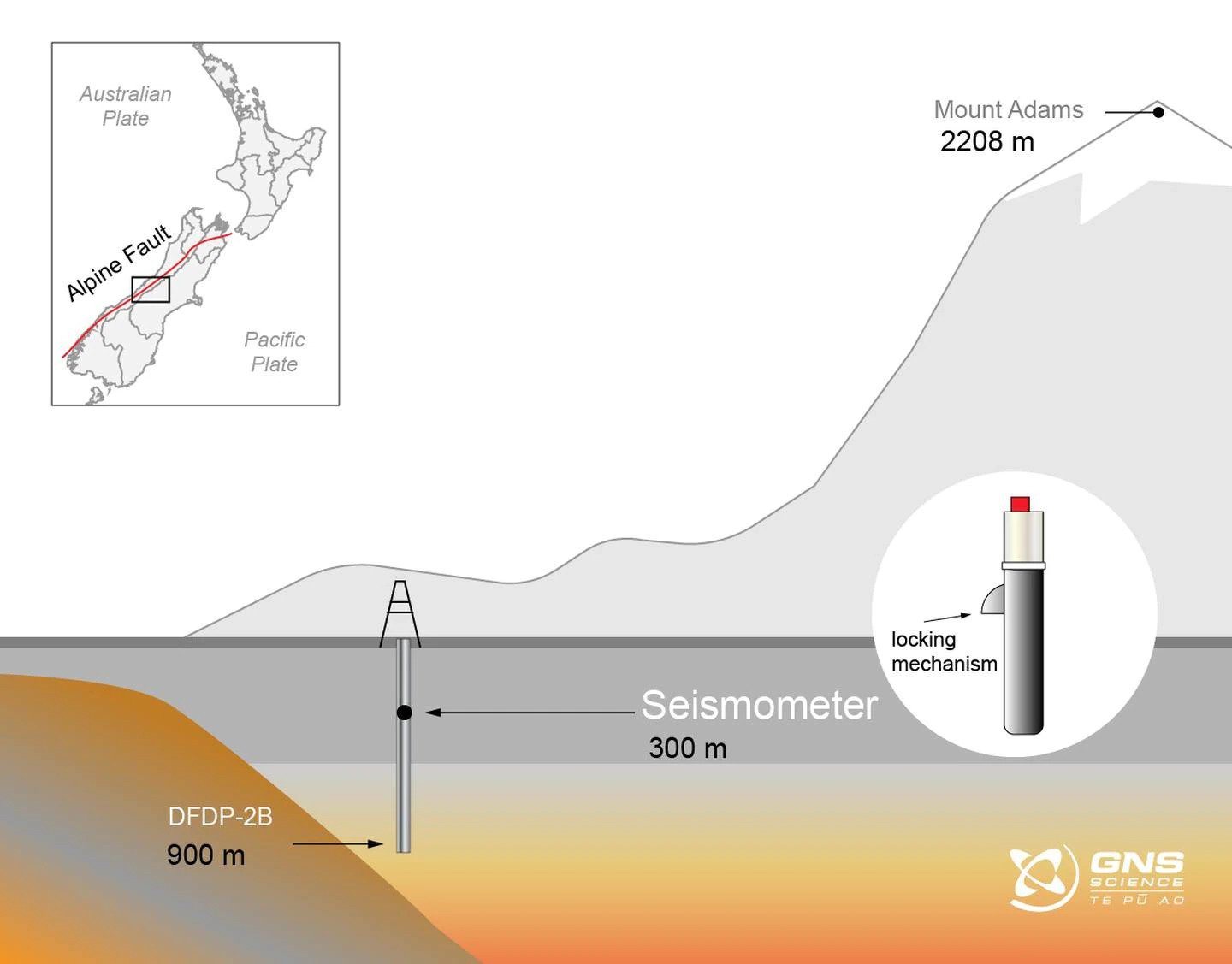
The DFDP-2B borehole in Whataroa, showing the GeoNet seismometer in place at 300 metres. The borehole is close to the Alpine Fault and the seismometer can record small earthquakes we wouldn't otherwise register. Image / GNS Science
"It's essentially a slim seismometer not much bigger than a can of baked beans, attached to a longer locking mechanism, and it's the first of this type of sensor we've installed in a deep borehole," McDougall said.
"We have a few sensors installed at similar depths keeping tabs on the Auckland Volcanic Field, but having one within metres of New Zealand's major fault line is truly significant."
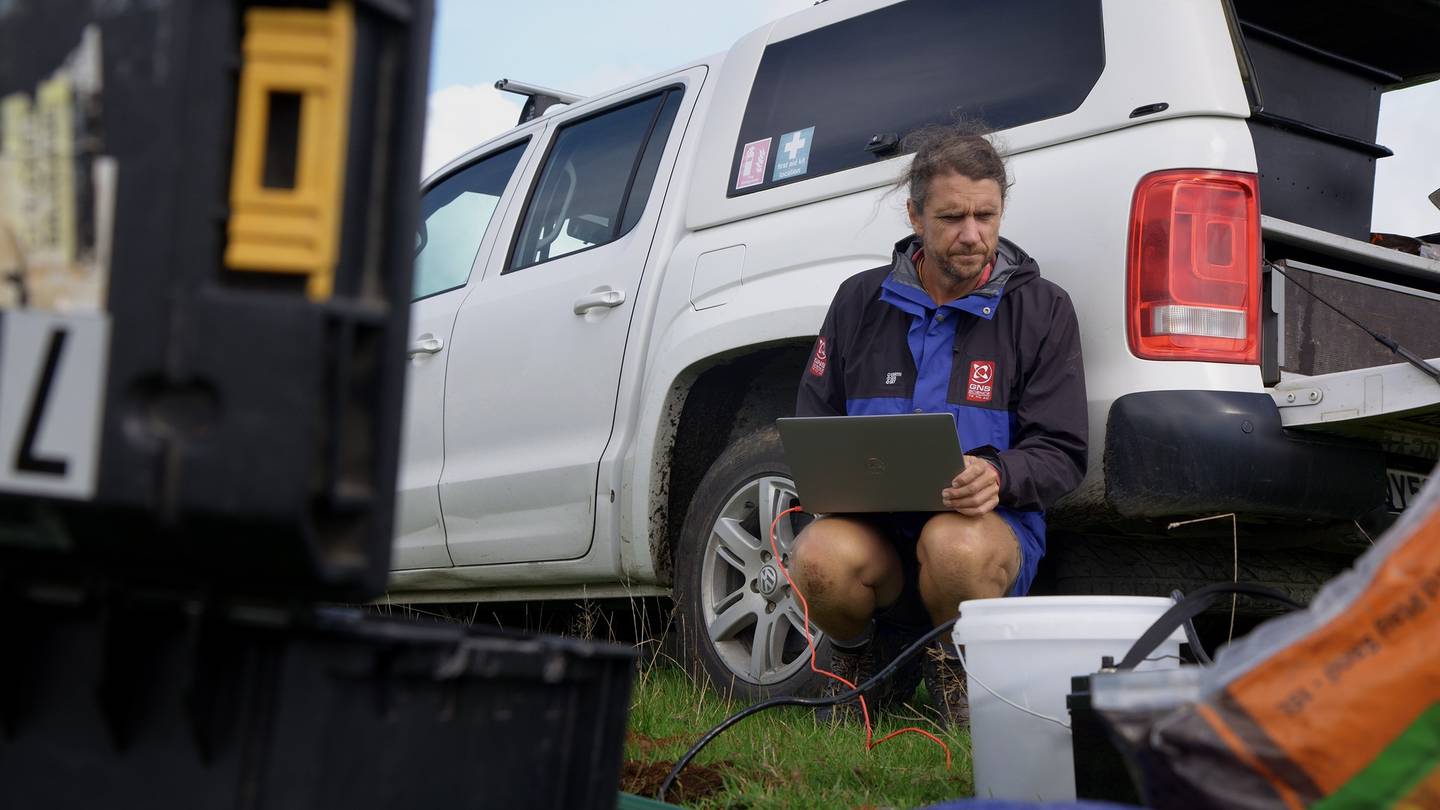
GNS Science scientist Tim McDougall said it was "truly significant" that New Zealand now had a sensor operating within metres of its major faultline. Photo / Jeff Brass/GNS Science.
The seismometer was "broadband", meaning that it was capable of recording seismic waves of a broad range of frequencies, and was now permanent part of the GeoNet network.
"We recently reviewed the data being collected by the sensor and are very happy with its quality," McDougall said.
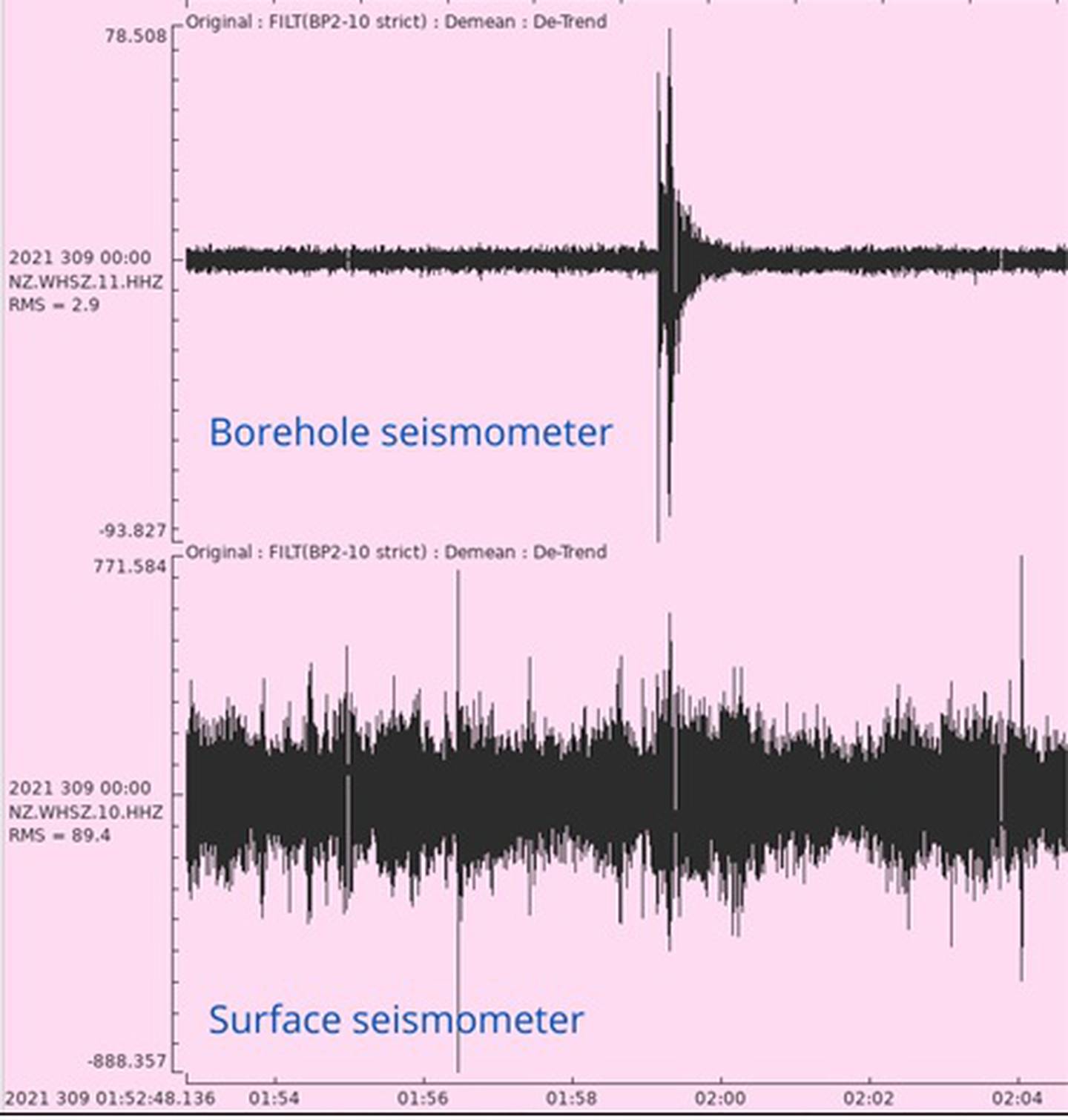
This image shows seismic traces from the same small earthquake, captured by both a newly-installed borehole seismometer and another at the surface. The signal recorded by the underground seismometer is much clearer. Image / GNS Science
"This is quite exceptional given that the ambient temperature at the sensor's location is very close to its operational temperature limit of 60C."
The borehole itself was drilled in 2014, as part of the multi-national Deep Fault Drilling Project.
"Installing a sensor so deep beneath the ground's surface and next to a major fault late in its typical earthquake cycle is very exciting," Townend said.
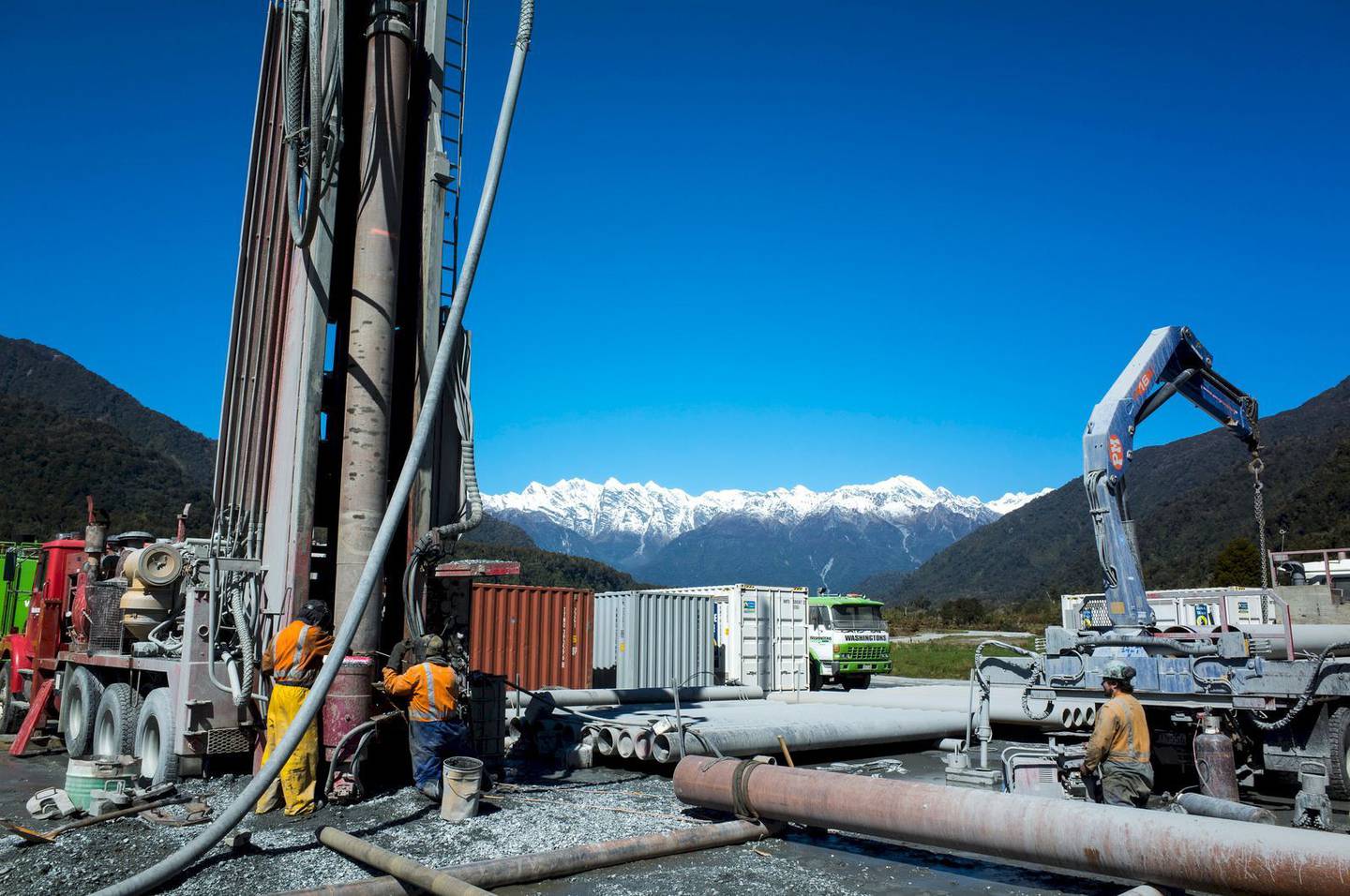
Engineers drill boreholes alongside the Alpine Fault at Whataroa, near Franz Josef, in 2014. Photo / Supplied
It comes as scientists have ramped up seismic surveillance along the wider fault, as part of several major new projects.
Townend and colleagues recently set up an array of 50 seismometers, spaced 10km apart over about 450km of the fault, to create a temporary network dubbed the Southern Alps Long Skinny Array, or Salsa.
"We've been working with data from existing sites to test some of the analyses we'll be doing, once the actual data from the Salsa array starts coming in," he said.
"That will be quite a task, as there are a lot of measurements involved."
Separately, scientists have been capturing new data about "micro-earthquakes" at boundaries along the fault south of Haast, where major quakes in the past have been shown to sometimes stop.
These boundaries are often called "earthquake gates", as they can sometimes either allow quakes to rupture through and become larger, or stop them and limit their size.
"But it's not clear to us which physical properties change between earthquakes to open or close the gate," said GNS Science seismologist Dr Emily Warren-Smith, who's leading the Dense Westland Arrays Researching Fault Segmentation (Dwarfs) project.
"Understanding what the scenario is ahead of the next earthquake however, can help us better prepare.
"By installing dense seismic networks above these fault boundaries, we can map, in unprecedented detail, the thousands of small earthquakes that occur there each year, and subsequently use those to build images of the fault's subsurface geometry, stress state and mechanical behaviour."
In just over three years, Warren-Smith's team has mapped more than 7000 small earthquakes – yielding rich new insights.
"In particular, south of Haast near the Cascade River, we've seen that the fault undergoes a dramatic change in angle at depth, changing from dipping at around 45 to 85 degrees over a short distance," she said.

The Alpine Fault, marking the boundary between the Pacific and Australian crustal plates, generates earthquakes of magnitude 8 to 8.2 about every 260 years. Photo / GNS Science
"This major geometrical complexity is very hard for earthquakes to rupture through and we believe changes in the distribution of stress on the fault, in between and during earthquakes, could be the key to allowing it to sometimes propagate through."
At its northern end, near Inchbonnie, the Alpine Fault was intersected by the Hope Fault and other smaller faults such as the Kelly and Hura faults.
"Our analysis of small earthquakes there shows that the Alpine Fault to the north of this intersection is very poorly aligned for failure," she said.
"On the other hand, the Hope fault and Alpine Fault to the south west are both well oriented and we propose this could indicate a preferred rupture route of northward propagating Alpine Fault earthquakes onto the Marlborough Fault system.
"We are currently building detailed 3D models of the fault to run simulations of major earthquakes to test these observations, and propose plausible rupture scenarios to better inform future hazard planning."
Take your Radio, Podcasts and Music with you









